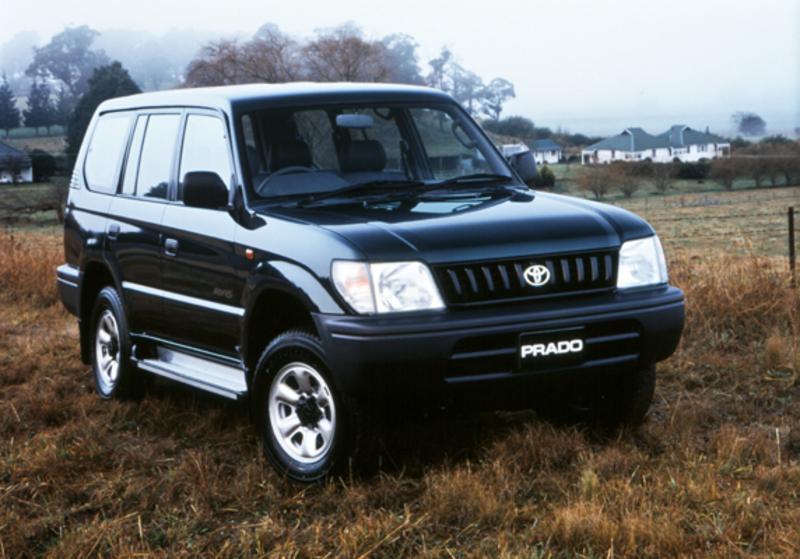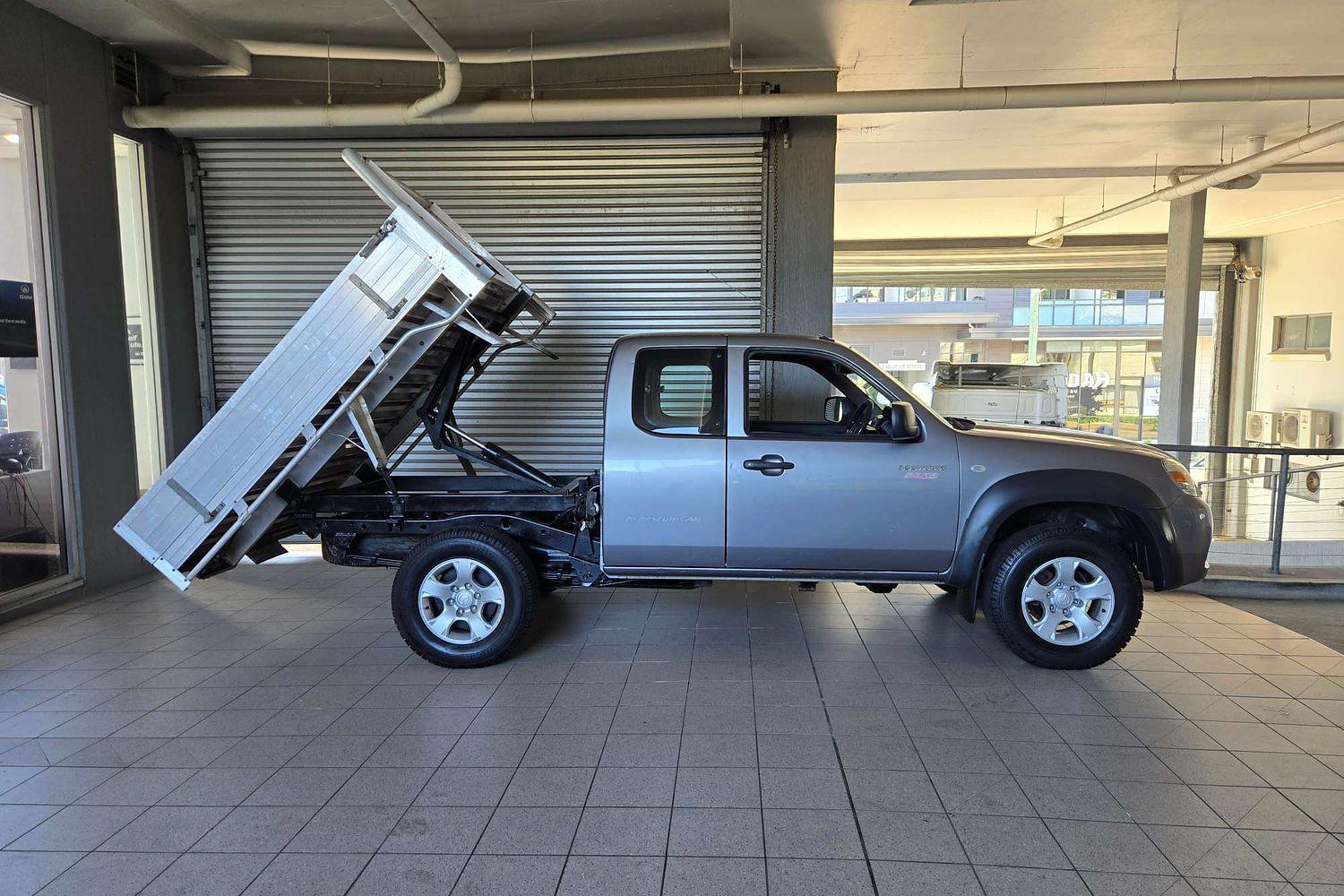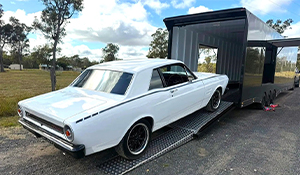1996 Toyota LandCruiser Prado Review
The vehicle of course was the Prado - Toyota's response to the success of the family-friendly Mitsubishi Pajero in the nineties. It provided diehard Toyota fans with a more affordable entry point, in a package that was smaller and more urban-friendly than the LandCruiser wagon.
As with all Toyota 4x4 launches, the range was extensive and buyers had the choice of seven models, with a choice of two petrol engines, two transmissions and four equipment levels.
The two engines were both new: a high tech EFI-equipped Twin Cam multi-valve 2.7-litre four-cylinder and a stronger EFI-equipped quad cam multi-valve 3.4-litre V6.
The V6 was designed as a high torque engine to suit urban and off-road driving and operation with automatic transmission. It had full sequential air-assisted electronic fuel injection, and delivered 132kW of power at 4800rpm and 303Nm of torque at 3600rpm - 260Nm of this from 1600rpm through to 4950rpm. It was Toyota's first Quad Cam commercial vehicle engine.
The 2.7-litre four-cylinder engine delivered more power than the superseded Toyota 4Runner 3.0-litre V6, delivering 112kW of power at 4800rpm (up 26 percent) and 240Nm of torque at 4000rpm (up 21 percent), with more than 200Nm of torque from 1250rpm through to 5200rpm.
Transmissions were a five-speed overdrive manual and an electronically controlled four-speed overdrive automatic with fuel saving lock-up clutch and second gear low traction start function. Both transmissions were matched to a two-speed transfer and full time four-wheel drive. The manual transmission for the V6 had synchromesh on reverse gear and triple cone synchromesh on first to second gear. Prado RV6 and GXL were offered with manual and automatic; VX Grande had automatic transmission.
The new Toyota A343F automatic transmission had push-button selectable power and economy modes, plus a lock-up torque converter. Its electronic control unit worked in conjunction with the engine ECU to provide engine torque control during gearshifts. The torque-control function momentarily retarded the engine's ignition timing, reducing torque and hence providing smoother gearshifts.
The auto Prado also gained a second gear low-traction start function, first introduced in March 1995 on the LandCruiser 80 series automatic. The second gear start function, controlled by a switch located next to the transmission shift lever, was designed to improve vehicle starting traction on low traction surfaces, such as sand or mud. It prevented the transmission from selecting first gear when the shift lever was in "2" or "D" range. The first gear lock out function self-cancelled when the engine was switched off.
The Prado actually received two upgraded five speed manual transmissions, both with synchromesh on reverse gear. Quad Cam V6 models had the improved R150F transmission used on the Toyota 4Runner. New features included adoption of triple cone synchromesh for first to second gear change, reduced internal friction and a reduced lever ratio to reduce shift effort.
The Prado RV manual received an improved Toyota W56 five-speed overdrive transmission, which had been used in HiLux.
The Prado was built on a similar ladder frame chassis as the LandCruiser 70 and 80 series, with a deformable body and chassis. All models had full-time 4WD, power assisted rack and pinion steering, double wishbone coil-spring front suspension, multi-link coil spring rear suspension and four wheel ventilated disc brakes.
The equipment levels, in ascending order, were the entry level RV four cylinder, recreational RV6, volume selling GXL V6 and luxury VX Grande V6.
Standard equipment in all Prado models included full-time four-wheel drive, tilt-adjustable steering, front seatbelt pretensioners, electronically tuned AM/FM radio cassette with four speakers, power central locking, variable intermittent front wipers, rear wiper/washer, rear demister, power-assisted rack and pinion and a limited slip rear differential.
All Prado models had seats which fold flush. The second row seat in Quad cam V6 models had a walk-in function to aid entry to the third row seat. The third row seats in all V6 models fold-up against the side windows. All Quad Cam V6 models had seating for eight persons, while RV models seated five. The Prado 4WD was designed for comfort and convenience, with a full grey interior, woven seat fabric on RV, RV6 and GXL models, and a velour seat trim on the VX Grande. There were numerous storage locations, including glovebox, front door pockets, centre console box and rear console box, plus six cupholders.
All V6 models also had a 159-litre fuel tank capacity; Prado RV had a 90-litre fuel tank.
Safety equipment was not seen as a strong selling point in 1996 and accordingly the combination of dual airbag SRS and ABS brakes were sold as options, as was air-conditioning.
Prado RV6 models gained the third row fold-away seat, extra 69-litre supplementary fuel tank and side steps. Prado GXL had as extra standard equipment wide wheels and tyres, fender overflares and side steps, sided protector cladding, power pack (central locking, windows and mirrors), CD player, cruise control, leather steering wheel and gear lever knob.
The top of the range VX Grande featured as additional standard equipment alloy wheels, velour seat trim, CD multi-changer, ABS brakes, dual airbags, dual factory fitted air-conditioning, load-area tonneau cover and middle-row seat arm rest. Optional for the VX Grande was a luxury pack consisting of leather seat coverings, power operated front seats and power operated moonroof and woodgrain trim.
The new Prado GXL and VX Grande were the first models in the Toyota Australian range to adopt a full engine immobiliser system, which prevented engine ignition and fuel delivery functions.
The Prado came with a 12-month or 20,000km warranty, along with a host of genuine accessories.












